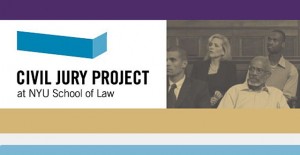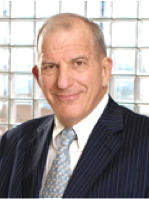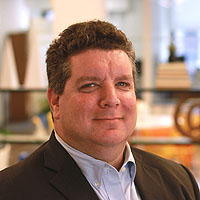Source of article DOAR Litigation Consulting.


Stephen Susman
In a new series on Law 360, Steve Susman, Richard Lorren Jolly and DOAR Jury Consultant Roy Futterman provide the Civil Jury Project’s proposed innovations for improved jury trials:
This is the second in our series of articles on the Civil Jury Project’s proposed innovations that can resuscitate the American jury trial. Each week we offer a summary of a different innovation, the legal support for its use, and empirical studies on its popularity. Each innovation has been proposed by academics and practitioners, implemented by state and federal judges, and is not prohibited in most jurisdictions. Most importantly, each innovation addresses the main criticisms leveled at juries — that they are too long, too expensive, too unpredictable — and are designed to make trial by civil jury a more desirable form of dispute resolution.
Innovation Two: Time Limits

Richard Lorren Jolly
This week, we focus on an obvious and relatively easy innovation: Setting early and strict time limits.
Principle 12 of the American Bar Association’s American Jury Project Principles and Standards provides that “
These time limits save money. Often the expense of trial corresponds directly with when the case is set for trial (and correspondingly how much time the parties have for discovery), whether the case will actually go to trial when it is set, and how long the trial takes. The sooner a judge sets a trial date and time limits, the more likely the limits are to have a beneficial effect on the amount of pretrial discovery sought. A lawyer facing a time limit of several days is going to have a hard time justifying to his client or partners why he needs multiple depositions that will never be read or shown to the jury. In this way, the effects of trial time limits can trickle down and affect the entire dispute resolution process. Justice Neil Gorsuch reported last year that only about 40 percent of the cases set for trial actually go when they are set and over 90 percent of motions for continuance are granted. This tremendously increases the expense and uncertainty of insisting upon trial rather than settlement. Time limits allow a judge to set cases at separate times, one after another. No trial needs to be continued because another has dragged on too long.

Roy Futterman, Ph.D.
Time limits also have positive effects for the jury. First, shorter trials have more diverse juries. At voir dire, the announcement of shorter trials keeps many potential jurors from being excused due to economic hardship, particularly in allowing many professionals and freelance workers to be able to rearrange their schedules to be able to work while serving with minimal interruption. Jurors also appreciate tighter, faster trials with fewer argument tangents and less repetition, allowing them to focus on the essentials at a more thoughtful pace.
Even without judicial input, attorneys can realize these benefits by structuring trial agreements that include time limits. Most lawyers who have participated in a time-limited trial report that time limits force them to try a better case. Unfortunately, however, data collected as part of the Civil Jury Project’s national survey shows that only 47.7 percent of attorneys have used trial time limits, and only half of those recommend them. The most common reason given by adverse attorneys is that they believe artificial time constrains hamstring good lawyers without regard for the realities of the case. This fear is exactly backward. Though it is true that time limits may force attorneys to abandon weaker alternative arguments, this trimming of the fat often results in a stronger overall argument. Confident attorneys should welcome this practice.
Trial time limits, then, offer the easiest way that judges and practitioners can start to increase the number and improve the quality of America’s jury trials. Because they ensure that lawyers do not waste time and money on duplicative evidence production, make it so that jurors can restructure their time and be mentally present for the entire trial, and help practitioners put forward their best arguments, setting early and strict time limits should be a relatively easy innovation to put in place in your next case.
Next week, we will address another easily implemented innovation that can better civil jury trials: Providing jurors instructions on the substantive law at the start of the case rather than at the conclusion.
Stephen D. Susman is a founder of Susman Godfrey LLP and the executive director for The Civil Jury Project at NYU School of Law.
Richard Loren Jolly is an attorney and research fellow at the Civil Jury Project.
Roy Futterman, Ph.D. is an adviser to the Civil Jury Project. He is a jury consultant, clinical psychologist and director at DOAR, Inc., as well as a columnist for Law360.
The post Innovating For Wise Juries: Setting Trial Time Limits appeared first on DOAR.
